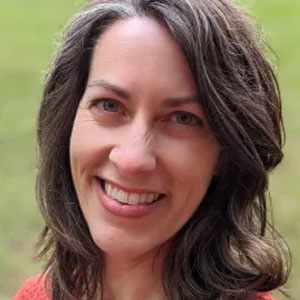Scientists see anti-aging potential in an invasive weed
The fruit of the cocklebur plant, which grows worldwide and is often considered a noxious weed, has antioxidant and anti-inflammatory components that could make it useful as a skin protectant, according to new research.
Researchers found that compounds in the species’ spiky fruits reduced damage from UVB exposure and sped wound healing in laboratory tests using cells and tissues. The cocklebur extracts also appear to influence the production of collagen, a protein that gives skin its elasticity and prevents wrinkles.
“We found that cocklebur fruit has the potential to protect the skin and help enhance production of collagen,” said Eunsu Song, a doctoral candidate at Myongji University in South Korea, who conducted the research with Myongji University Professsor Jinah Hwang. “In this regard, it could be an attractive ingredient for creams or other cosmetic forms. It will likely show a synergistic effect if it is mixed with other effective compounds, such as hyaluronic acid or retinoic acid, against aging.”

Song will present the new research at Discover BMB, the annual meeting of the American Society for Biochemistry and Molecular Biology, March 25–28 in Seattle.
Cocklebur is a plant native to Southern Europe, Central Asia and China that has spread worldwide, often found in moist or sandy areas such as roadside ditches and riverbanks. Its distinctive fruits, covered in stiff husks and burrs, have been used for centuries in traditional medicines for headache, stuffy nose, disorders of skin pigmentation, tuberculosis-related illness and rheumatoid arthritis. In recent years scientists have explored its potential use in treatments for rheumatoid arthritis and cancer.
The new study is the first to examine the fruit’s properties as a wound-healing agent and skin protectant. Researchers first studied the molecular properties of cocklebur fruit extracts and isolated particular compounds that could contribute to anti-oxidant and anti-inflammatory effects. They then used cell cultures and a 3D tissue model with properties similar to human skin to study how these compounds affect collagen production, wound healing and damage from UVB radiation.
The results showed that the cocklebur fruit extracts encouraged collagen production, sped wound healing and exerted a protective effect against UVB radiation. Comparing the bioactivity of cocklebur fruits grown in different places, the researchers found that fruits grown in South Korea had slightly higher anti-oxidant and anti-inflammatory properties and greater wound-healing activity than those grown in China.
Researchers cautioned that high doses of cocklebur fruit extract can be harmful and further research is needed to determine how to use it safely in cosmetic or pharmaceutical applications.
“In its burrs, cocklebur fruit also has a toxic constituent, carboxyatractyloside, which can damage the liver,” said Song. “Cocklebur showed a potential as a cosmetic agent by increasing collagen synthesis; however, it showed negative results with higher concentrations. Therefore, finding the proper concentration seems very important and would be key to commercializing cocklebur fruit extracts in cosmetics.”
Moving forward, the researchers plan to further study the biological mechanisms involved and conduct experiments in animal alternatives to explore ways to safely adapt cocklebur fruit extracts for use in cosmetic products.
Eunsu Song will present this research during the poster session from 4–5:30 p.m. PDT on Tuesday, March 28, in the Exhibit Hall of the Seattle Convention Center (abstract) (Poster Board No. 139). Contact the media team for more information or to obtain a free press pass to attend the meeting.
Enjoy reading ASBMB Today?
Become a member to receive the print edition four times a year and the digital edition monthly.
Learn moreGet the latest from ASBMB Today
Enter your email address, and we’ll send you a weekly email with recent articles, interviews and more.
Latest in Science
Science highlights or most popular articles

Using DNA barcodes to capture local biodiversity
Undergraduate at the University of California, Santa Barbara, leads citizen science initiative to engage the public in DNA barcoding to catalog local biodiversity, fostering community involvement in science.

Targeting Toxoplasma parasites and their protein accomplices
Researchers identify that a Toxoplasma gondii enzyme drives parasite's survival. Read more about this recent study from the Journal of Lipid Research.

Scavenger protein receptor aids the transport of lipoproteins
Scientists elucidated how two major splice variants of scavenger receptors affect cellular localization in endothelial cells. Read more about this recent study from the Journal of Lipid Research.

Fat cells are a culprit in osteoporosis
Scientists reveal that lipid transfer from bone marrow adipocytes to osteoblasts impairs bone formation by downregulating osteogenic proteins and inducing ferroptosis. Read more about this recent study from the Journal of Lipid Research.

Unraveling oncogenesis: What makes cancer tick?
Learn about the ASBMB 2025 symposium on oncogenic hubs: chromatin regulatory and transcriptional complexes in cancer.

Exploring lipid metabolism: A journey through time and innovation
Recent lipid metabolism research has unveiled critical insights into lipid–protein interactions, offering potential therapeutic targets for metabolic and neurodegenerative diseases. Check out the latest in lipid science at the ASBMB annual meeting.

